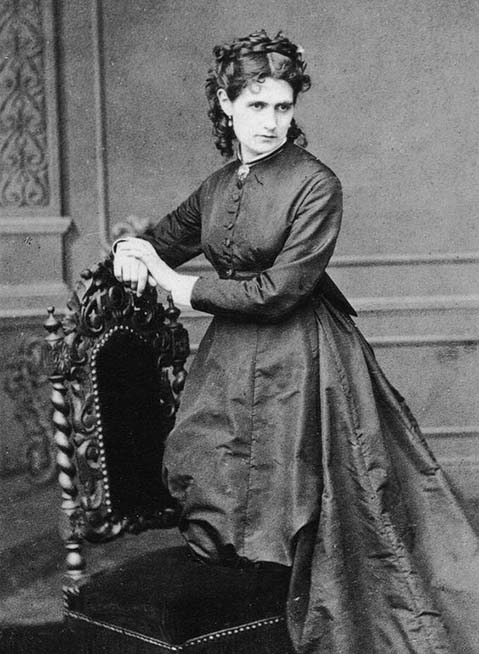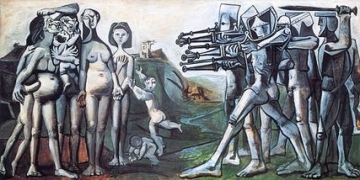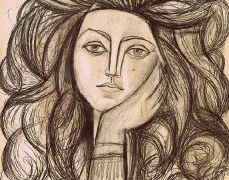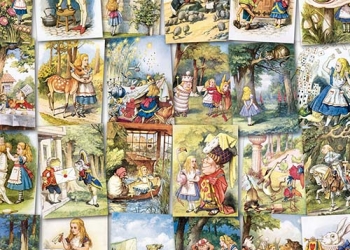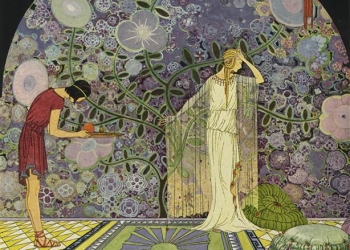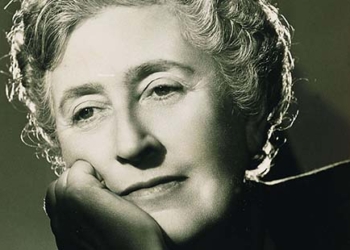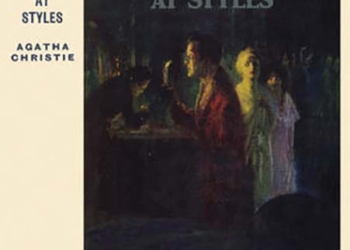Berthe Morisot - At - the Exposition Palace
Berthe Morisot - Self - Portrait
Berthe Morisot - Study - for girl with the green coat, 17,5x10,2 cm
Berthe Morisot - The - Bois de Boulogne
Berthe Morisot - Women - and Little Girls in a Natural Setting
Berthe Morisot [1858] - Calvary (after Veronese)
Berthe Morisot [1859] - Farm in Normandy
Berthe Morisot [1863] - Old Path at Auvers
Berthe Morisot [1863] - View of Tivoli (after Corot)
Berthe Morisot [1864] - Study - The Water's Edge
Berthe Morisot [1864] - Young Lady Seated on a Bench
Berthe Morisot [1865-1890] - Julie enfant au chapeau, Julie child with the hat, 15xx11 cm
Berthe Morisot [1865] - Chaumiere en Normandie, Thatched cottage in Normandy, 46x55 cm
Berthe Morisot [1865] - Thatched Cottage in Normandy
Berthe Morisot [1866-1867] - Rosbras (Finistere)
Berthe Morisot [1866] - A Young Girl with Cat
Berthe Morisot [1866] - Rosalie Reisener - Musee d'Orsay (France)
Berthe Morisot [1866] - The Seine below the Pont d'Lena
Berthe Morisot [1869-1870] - Mother and Sister of the Artist - National Gallery of Art - Washington (USA)
Berthe Morisot [1869] - Young woman with her window, 54x45 cm
Berthe Morisot [1869] - The Artist's Sister at a Window - National Gallery of Art - Washington (USA)
Berthe Morisot [1869] - The Harbor at Lorient - National Gallery of Art - Washington (USA)
Berthe Morisot [1869] - Two Sisters on a Couch - National Gallery of Art - Washington (USA)
Berthe Morisot [1870-1880] - Portrait of a Young Girl
Berthe Morisot [1870] - La Mere et la Soeur de l'Artiste, Detail 101x81,8 cm
Berthe Morisot [1870] - Portrait of Edma - Courtauld Institute Galleries (England)
Berthe Morisot [1870] - The Pink Dress (also known as poop)
Berthe Morisot [1870] - Woman and child on a balcony, 20,6x17,5 cm
Berthe Morisot [1871-72] - Woman and Child on a Balcony
Berthe Morisot [1871] - On the Sofa, 18x14 cm
Berthe Morisot [1871] - On the Sofa - National museum - Stockholm (Sweden)
Berthe Morisot [1871] - Portrait of Madame Pontillon - Musee d'Orsay (France)
Berthe Morisot [1871] - Woman and Child Seated in a Meadow
Berthe Morisot [1871] - Young Woman
Berthe Morisot [1872] - Interior, 60x73 cm
Berthe Morisot [1872] - Interior
Berthe Morisot [1872] - Le Berceau Oil on Canvas 56x46 cm
Berthe Morisot [1872] - Madame Pontillon and her daughter on a settee, 21x22 cm
Berthe Morisot [1872] - On the Balcony - The Art Institute of Chicago (USA)
Berthe Morisot [1872] - The Artist's Sister Edma with Her Daughter Jeanne - National Gallery of Art - Washington (USA)
Berthe Morisot [1872] - The Cradle - Musee d'Orsay (France)
Berthe Morisot [1872] - View of Paris from the Trocadero Heights - Santa Barbara Museum of Art (USA)
Berthe Morisot [1872] - Woman and child on a balcony, 60x50 cm
Berthe Morisot [1873] - Hide and Seek
Berthe Morisot [1873] - Hide-and-seek, 44,8x55 cm
Berthe Morisot [1873] - Portrait of Marguerite Carre (also known as Young Girl in a Ball Gown)
Berthe Morisot [1873] - Reading with Green Umbrella - Cleveland Museum of Art (USA)
Berthe Morisot [1873] - The Beach at Petit-Dalles (also known as On the Beach) - Virginia Museum of Fine Arts (USA)
Berthe Morisot [1873] - The Village of Maurecourt
Berthe Morisot [1873] - Young Girl with a Parrot
Berthe Morisot [1874] - Boats under Construction - Musee Marmottan (France)
Berthe Morisot [1874] - Chasing Butterflies - Musee d'Orsay (France)
Berthe Morisot [1874] - Harbor in the Port of Fecamp
Berthe Morisot [1874] - Hunting for the butterflies, 46x56 cm
Berthe Morisot [1874] - In a Villa at the Seaside - Norton Simon Museum (USA)
Berthe Morisot [1874] - In a villa at the edge of the sea, 51x61 cm
Berthe Morisot [1874] - Lilacs With Maurecourt, 50x61 cm
Berthe Morisot [1874] - Lilacs at Maurecourt
Berthe Morisot [1874] - Madame Boursier and Her Daughter - Brooklyn Museum of Art (USA)
Berthe Morisot [1874] - On the lawn, 73x92 cm
Berthe Morisot [1874] - On the Lawn - Musee du Petit Palais (France)
Berthe Morisot [1874] - On the Terrace - Fuji Art Museum (Japan)
Berthe Morisot [1874] - Portrait of Madame Hubbard - Ordrupgaard Collection (Denmark)
Berthe Morisot [1874] - Portrait of Mrs Hubard, 50,5x81 cm
Berthe Morisot [1874] - Woman and child at the, 12x16 cm
Berthe Morisot [1875] - Aboard a Yacht
Berthe Morisot [1875] - At the Ball - Musee Marmottan (France)
Berthe Morisot [1875] - Boat at Dock - Musee Marmottan (France)
Berthe Morisot [1875] - Boats, Entry to the Medina in the Isle of Wight (also known as pugad baboy) - Fogg Museum of Art (USA)
Berthe Morisot [1875] - English Seascape - Newark Museum (USA)
Berthe Morisot [1875] - Eugene Manet in the Island of Wight, 38x46 cm
Berthe Morisot [1875] - Eugene Manet on the Isle of Wight - Musee Marmottan (France)
Berthe Morisot [1875] - Girl and Child on the Grass
Berthe Morisot [1875] - Hanging the Laundry out to Dry
Berthe Morisot [1875] - Harbor Scene, Isle Wight
Berthe Morisot [1875] - In the Wheat Fields at Gennevilliers - Musee d'Orsay (France)
Berthe Morisot [1875] - Jeune Femme a sa toilette
Berthe Morisot [1875] - Landscape at Gennevilliers
Berthe Morisot [1875] - Landscape near Valenciennes
Berthe Morisot [1875] - Portrait de Madame Pontillon, 81x65 cm
Berthe Morisot [1875] - The Little Windmill at Gennevilliers
Berthe Morisot [1875] - Un percher de blanchisseuses - Oil on Canvas 33x40,6 cm
Berthe Morisot [1875] - Un percher de blanchisseuses
Berthe Morisot [1875] - Villenueve-la-Garenne
Berthe Morisot [1875] - With the ball, 62x52 cm
Berthe Morisot [1875] - Young woman and child in grass, 16x22 cm
Berthe Morisot [1876] - Dahlias
Berthe Morisot [1876] - Psyche - Thyssen-Bornemisza Museum (Spain)
Berthe Morisot [1876] - Psyche, Detail
Berthe Morisot [1876] - Woman with a Fan (also known as Head of a Girl)
Berthe Morisot [1876] - Young Woman Watering a Shrub
Berthe Morisot [1877] - Anonyme Photographie Portrait
Berthe Morisot [1877] - Tureen and Apple - Denver Art Museum (USA)
Berthe Morisot [1877] - Young Woman Powdering Her Face - Musee d'Orsay (France)
Berthe Morisot [1877] - Young woman powdering itself, 46x38 cm
Berthe Morisot [1878] - Jeune Fille pres d'une Fenetre, 76x61 cm
Berthe Morisot [1878] - Summer (also known as Young Woman by a Window) - Musee Fabre (France)
Berthe Morisot [1878] - Woman in Black - National Gallery of Ireland (Ireland)
Berthe Morisot [1879] - A Summer's Day - National Gallery - London (England)
Berthe Morisot [1879] - Behind the Blinds
Berthe Morisot [1879] - By the Water
Berthe Morisot [1879] - Day of summer, 46x75 cm
Berthe Morisot [1879] - Luncheon in the Countryside
Berthe Morisot [1879] - Woman Picking Flowers - Nationalmuseum - Stockholm (Sweden)
Berthe Morisot [1879] - Young Woman Dressed for the Ball - Musee d'Orsay (France)
Berthe Morisot [1879] - Young Woman in Grey Reclining
Berthe Morisot [1880] - Little boy in gray, detail
Berthe Morisot [1880] - Anonyme Eugene Manet, Berthe Morisot et leur fille Julie a Bougival Photographie
Berthe Morisot [1880] - Boats on the Seine
Berthe Morisot [1880] - Julie with Her Nurse - Ny Carlsberg Glyptotek (Denmark)
Berthe Morisot [1880] - La Nourrice Angele allaitant Julie Manet 50,2x61 cm
Berthe Morisot [1880] - La salle a manger 92x73 cm
Berthe Morisot [1880] - Little boy in gray, 86x62 cm
Berthe Morisot [1880] - Portrait of Marcel
Berthe Morisot [1880] - Snowy Landscape (also known as Frost)
Berthe Morisot [1880] - The Dining Room of the Rouart Family, Avenue d'Eylau
Berthe Morisot [1880] - The Wet Nurse Angele Feeding Julie Manet
Berthe Morisot [1880] - Winter (also known as Woman with a Muff) - Dallas Museum of Art (USA)
Berthe Morisot [1880] - Woman Getting Dressed (also known as Young Woman Fastening Her Stockings)
Berthe Morisot [1880] - Young Woman in Mauve
Berthe Morisot [1880] - Young Woman in a Rowboat, Eventail
Berthe Morisot [1880] - Young woman giving her shoe, 46x55 cm
Berthe Morisot [1880] - Young woman with her toilet, 60x80 cm
Berthe Morisot [1881-1882] - Pasie Sewing in the Garden
Berthe Morisot [1881] - After Luncheon
Berthe Morisot [1881] - Child in the Rose Garden - Wallraf-Richartz-Museum (Germany)
Berthe Morisot [1881] - Eugene Manet and his daughter with Bougival, 73x92 cm
Berthe Morisot [1881] - Julie with Pasie in the Garden at Bougival - National Museums and Galleries of Wales
Berthe Morisot [1881] - On the Balcony of Eugene Manet's Room at Bougival
Berthe Morisot [1881] - Woman Hanging out the Wash - Ny Carlsberg Glyptotek (Denmark)
Berthe Morisot [1882] - Child Playing in the Garden
Berthe Morisot [1882] - Landscape of La Creuse
Berthe Morisot [1882] - Little Girl Sitting on the Grass
Berthe Morisot [1882] - Playing in the Sand
Berthe Morisot [1882] - Studies of a Little Girl
Berthe Morisot [1882] - Tete de chien griffon, Follette
Berthe Morisot [1882] - The Beach at Nice
Berthe Morisot [1882] - The Port of Nice
Berthe Morisot [1882] - Villa with Orange Trees, Nice
Berthe Morisot [1883] - Eugene Manet and His Daughter in the Garden
Berthe Morisot [1883] - Eugene Manet and his daughter with the Garden, 60x73 cm
Berthe Morisot [1883] - Haymakers at Bougival - Musee Marmottan (France)
Berthe Morisot [1883] - Haystack
Berthe Morisot [1883] - Julie et sa Poupee, 22,5x19 cm
Berthe Morisot [1883] - Little Girl with Blond Hair
Berthe Morisot [1883] - The Fable, 65x81 cm
Berthe Morisot [1883] - The Fable
Berthe Morisot [1883] - The Quay at Bougival - Nasjonalgalleriet - Norway (Norway)
Berthe Morisot [1883] - Venus at the Forge of Vulcan (after Boucher)
Berthe Morisot [1883] - Young Girl with Doll
Berthe Morisot [1883] - Young Woman Sewing in the Garden - Metropolitan Museum of Art (USA)
Berthe Morisot [1883] - Young Woman and Child on an Isle - Peabody Collection (USA)
Berthe Morisot [1884] - Autumn in the Bois de Boulogne
Berthe Morisot [1884] - Child in Bed
Berthe Morisot [1884] - Dans la Salle a manger - Oil on Canvas 61,3x50 cm
Berthe Morisot [1884] - Garden With Bougival, 72x92 cm
Berthe Morisot [1884] - Girl Sewing in a Garden - National Galleries of Scotland
Berthe Morisot [1884] - In the Gardens of Maurecourt, 54x65 cm
Berthe Morisot [1884] - In the Veranda, 81x100 cm
Berthe Morisot [1884] - Julie Writing
Berthe Morisot [1884] - Julie and Her Boat
Berthe Morisot [1884] - Little Girl in a Garden
Berthe Morisot [1884] - Miss Reynolds
Berthe Morisot [1884] - On the Lake in the Bois de Boulogne
Berthe Morisot [1884] - On the Lake
Berthe Morisot [1884] - On the Veranda
Berthe Morisot [1884] - Portrait of Paule Gobillard
Berthe Morisot [1884] - Rose Tremiere - Musee Marmottan (France)
Berthe Morisot [1884] - The Garden at Bougival - Musee Marmottan (France)
Berthe Morisot [1884] - The Headstock in the Veranda, 50x48 cm
Berthe Morisot [1884] - The Seine at Bougival
Berthe Morisot [1884] - The Sewing Lesson (also known as The Artist's Daughter, Julie, with Her Nanny) - Minneapolis Institute of Arts (USA)
Berthe Morisot [1884] - Willows in the Garden at Bougival
Berthe Morisot [1884] - Woman and Child in a Garden - National Galleries of Scotland (Scotland)
Berthe Morisot [1884] - Young Girl with Doll
Berthe Morisot [1884] - Young Woman Sitting on the Grass
Berthe Morisot [1885-1886] - Getting Up
Berthe Morisot [1885-1886] - Getting out of Bed
Berthe Morisot [1885-1886] - The Bath - Sterling and Francine Clark Art Institute (USA)
Berthe Morisot [1885] - A Corner of the Rose Garden
Berthe Morisot [1885] - Daffodils
Berthe Morisot [1885] - Daisies - Museum of Fine Arts (USA)
Berthe Morisot [1885] - In the Garden
Berthe Morisot [1885] - Lady with a Parasol Sitting in a Park - Metropolitan Museum of Art (USA)
Berthe Morisot [1885] - Little Dancer
Berthe Morisot [1885] - Portrait of Berthe Morisot and Her Daughter
Berthe Morisot [1885] - The Basket Chair - Museum of Fine Arts - Houston (USA)
Berthe Morisot [1885] - The Cage - National Museum of Women in the Arts (USA)
Berthe Morisot [1885] - The Goose
Berthe Morisot [1885] - The Tuileries
Berthe Morisot [1885] - Woman Wearing Gloves (also known as The Parisian)
Berthe Morisot [1885] - Woman sitting with Wood, 19x20,8 cm
Berthe Morisot [1885] - Young Woman on a Couch - Tate Britain (England)
Berthe Morisot [1886] - Child with a Red Apron
Berthe Morisot [1886] - Children with a Bowl - Musee Marmottan (France)
Berthe Morisot [1886] - Cottage Interior (also known as Interior at Jersey) - Musee d'Ixelles (Belgium)
Berthe Morisot [1886] - Enfants a la vasque - Oil on Canvas 73x92 cm
Berthe Morisot [1886] - Enfants a la vasque
Berthe Morisot [1886] - Fillette a la poupee, Detail PEINTURE Detail 97x58 cm
Berthe Morisot [1886] - Girl with Dog
Berthe Morisot [1886] - In the dining room, 60x49 cm
Berthe Morisot [1886] - In the Dining Room - National Gallery of Art - Washington (USA)
Berthe Morisot [1886] - Interior of Cottage or the Child with the Headstock, 50x60 cm
Berthe Morisot [1886] - Le Lever
Berthe Morisot [1886] - Little Girl in a Blue Dress - Musee Marmottan (France)
Berthe Morisot [1886] - Little Girl with a Doll
Berthe Morisot [1886] - Pauke Gobillard, 73x60 cm
Berthe Morisot [1886] - Paule Gobillard Painting - Musee Marmottan (France)
Berthe Morisot [1886] - Portrait of the Artist's Daughter, Julie Manet, at Gorey
Berthe Morisot [1886] - The Lesson in the Garden
Berthe Morisot [1886] - The Little Maid Servant
Berthe Morisot [1886] - Young Woman in White (also known as Isabelle Lemmonier)
Berthe Morisot [1887] - Model at rest, 65x54 cm
Berthe Morisot [1887] - Self Portrait with Julie (study)
Berthe Morisot [1887] - The Lesson of Drawing, 26x19 cm
Berthe Morisot [1887] - Young Woman Leaning on Her Elbow
Berthe Morisot [1888] - Bather Upright, 47x30 cm
Berthe Morisot [1888] - Fall Colors in the Bois de Boulogne
Berthe Morisot [1888] - Girl with Shuttlecock (also known as Jeanne Bonnet)
Berthe Morisot [1888] - Jeannie's Head (also known as Tete de Jeannie)
Berthe Morisot [1888] - Julie Listening
Berthe Morisot [1888] - Mademoiselle Louise Riesener, 56x47 cm
Berthe Morisot [1888] - Reading - Museum of Fine Arts - Saint Petersburg (USA)
Berthe Morisot [1888] - Swans
Berthe Morisot [1888] - The Blue Vase
Berthe Morisot [1888] - The Duck (with Reeds and Sagittarius), 13,7x10 cm
Berthe Morisot [1888] - The Lake of the Wood of Boulogne, 16x12 cm
Berthe Morisot [1888] - The Piano, 65x81 cm
Berthe Morisot [1888] - The Piano
Berthe Morisot [1888] - Young Girl and the Budgie
Berthe Morisot [1889] - Bibi a Vasse, 26x19,5 cm
Berthe Morisot [1889] - Carriage in the Bois de Boulogne - Ashmolean Museum (England)
Berthe Morisot [1889] - Girl in a Boat, with Geese - National Gallery of Art - Washington (USA)
Berthe Morisot [1889] - Julie with the Mandoline, 19x15 cm
Berthe Morisot [1889] - Julie in the Apple tree, 24x36,5 cm
Berthe Morisot [1889] - L'Oie, The Goose, Dessin, Pointe Seche, 14,2x11,3 cm
Berthe Morisot [1889] - La Broderie DESSIN Crayon sur papier 19x22 cm
Berthe Morisot [1889] - La Broderie DESSIN
Berthe Morisot [1889] - Madame Albine Sermicola in the Studio - E G Buhrle Collection (Switzerland)
Berthe Morisot [1889] - Nu de Dos, Naked of Back, Dessin, Pointe Seche, 13x9,2 cm
Berthe Morisot [1889] - On a Bench
Berthe Morisot [1889] - Portrait of Julie
Berthe Morisot [1889] - Study for the Young woman at rest, 47x62 cm
Berthe Morisot [1889] - The Embroidery, 19x22 cm
Berthe Morisot [1889] - The Little Girl from Nice, Celestine - Musee des Beaux-Arts - Lyon (France)
Berthe Morisot [1889] - The Mandolin
Berthe Morisot [1889] - The Orange Picker - Musee d'Art et d'Histoire de Provence (France)
Berthe Morisot [1889] - The Orange Picker
Berthe Morisot [1889] - Under the Orange tree,Oil on Canvas, 54x65 cm
Berthe Morisot [1889] - Young Woman Picking Oranges
Berthe Morisot [1889] - Young Woman in a Blue Blouse
Berthe Morisot [1889] - Young girl writing
Berthe Morisot [1889] - Young woman at rest, 7,5x11,3 cm
Berthe Morisot [1890] - Bust of Alice Gamby
Berthe Morisot [1890] - Girl Playing the Mandolin
Berthe Morisot [1890] - In front of Psyche, 30x20 cm
Berthe Morisot [1890] - Jeune Fille dans le Jardin de Mezy, Dessin, Crayon de couleur, 28x18 cm
Berthe Morisot [1890] - Julie Manet with a Budgie
Berthe Morisot [1890] - Julie Manet, Reading in a Chaise Lounge
Berthe Morisot [1890] - Le Petit Saint-Jean, Small Midsummer's Day, 58x36 cm
Berthe Morisot [1890] - The Bowl of Milk
Berthe Morisot [1890] - The Flageolet
Berthe Morisot [1891] - Baigneuse, Bather, 45x37 cm
Berthe Morisot [1891] - Bather
Berthe Morisot [1891] - Before the Mirror
Berthe Morisot [1891] - Conversation
Berthe Morisot [1891] - Ecrivant a la Fenetre PEINTURE 57,7x46 cm
Berthe Morisot [1891] - Haying at Mezy
Berthe Morisot [1891] - Laid down naked shepherdess, 37x54 cm
Berthe Morisot [1891] - Shepherdess Laying Down - Musee Marmottan (France)
Berthe Morisot [1891] - Shepherdess Laying Down
Berthe Morisot [1891] - The Cherry Tree (study) - Musee Marmottan (France)
Berthe Morisot [1891] - The Cherry Tree - Musee Marmottan (France)
Berthe Morisot [1891] - The Cherry tree, 154x80cm
Berthe Morisot [1891] - The Gathering of cherries, 74x48 cm
Berthe Morisot [1891] - The Reclining Shepherdess
Berthe Morisot [1891] - Young Girl with a Bird
Berthe Morisot [1891] - Young Woman in White
Berthe Morisot [1891] - Young Woman in a Blue Blouse
Berthe Morisot [1891] - Young Woman in a Hat (Henriette Patte)
Berthe Morisot [1891] - Young girl with the basket, 56x39 cm
Berthe Morisot [1892] - 1893 - Studying the Violin
Berthe Morisot [1892] - Boating on the Lake
Berthe Morisot [1892] - Girl in a Straw Hat
Berthe Morisot [1892] - Girl with Cat
Berthe Morisot [1892] - Girl with Dog
Berthe Morisot [1892] - Girl with the cat, 55x46 cm
Berthe Morisot [1892] - Little Girl at Mesnil (Jeanne Bodeau)
Berthe Morisot [1892] - Little Girls at the Window (Jeanne and Edma Bodeau)
Berthe Morisot [1892] - Lucie Leon at the Piano
Berthe Morisot [1892] - The Bath at Mesnil
Berthe Morisot [1892] - Two Nymphs Embracing
Berthe Morisot [1892] - Young girls in front of the window, 65x49 cm
Berthe Morisot [1893] - Girl reading, 19x12 cm
Berthe Morisot [1893] - Girl with Fan
Berthe Morisot [1893] - Jeanne Pontillon Wearing a Hat
Berthe Morisot [1893] - Jeanne Pontillon, 35x43 cm
Berthe Morisot [1893] - Jeune Fille Etendue, Extended Girl, Detail
Berthe Morisot [1893] - Jeune Fille a la Levrette
Berthe Morisot [1893] - Julie Manet and Her Greyhound, Laertes - Musee Marmottan (France)
Berthe Morisot [1893] - Julie Manet and her Laerte Greyhound, 73x80 cm
Berthe Morisot [1893] - Julie Manet, 35x22 cm
Berthe Morisot [1893] - Julie Playing a Violin
Berthe Morisot [1893] - Julie with the Violin, 39x28 cm
Berthe Morisot [1893] - Portrait of Children
Berthe Morisot [1893] - The Violin
Berthe Morisot [1893] - Young Girl with an Umbrella
Berthe Morisot [1893] - eune Fille etendue
Berthe Morisot [1894] - Bather out of Shirt, Marthe, 56x44,5 cm
Berthe Morisot [1894] - Choir Boy
Berthe Morisot [1894] - Jeannie Gobillard
Berthe Morisot [1894] - Jeune Fille Blonde, Fair Girl
Berthe Morisot [1894] - Jeune Reveuse, 64x54 cm
Berthe Morisot [1894] - Julie Daydreaming
Berthe Morisot [1894] - On the Beach at Portrieux
Berthe Morisot [1894] - On the Cliff at Portrieux
Berthe Morisot [1894] - Portrait of Jeanne Pontillon
Berthe Morisot [1894] - Roses
Berthe Morisot [1894] - Study for the Sonata of Mozart, 22x30 cm
Berthe Morisot [1894] - The Banks of the Seine
Berthe Morisot [1894] - The Black Finger Bandage
Berthe Morisot [1894] - The Hairdresser - Museu Nacional de Bellas Artes (Argentina)
Berthe Morisot [1894] - Underwood in Autome, 43x33 cm,
Berthe Morisot [1894] - Woman and Child
Berthe Morisot [1894] - Young Girl Resting
Berthe Morisot [1894] - Young Woman Leaning on Her Elbows
Berthe Morisot [1894] - Young Woman and Child, Avenue du Bois
